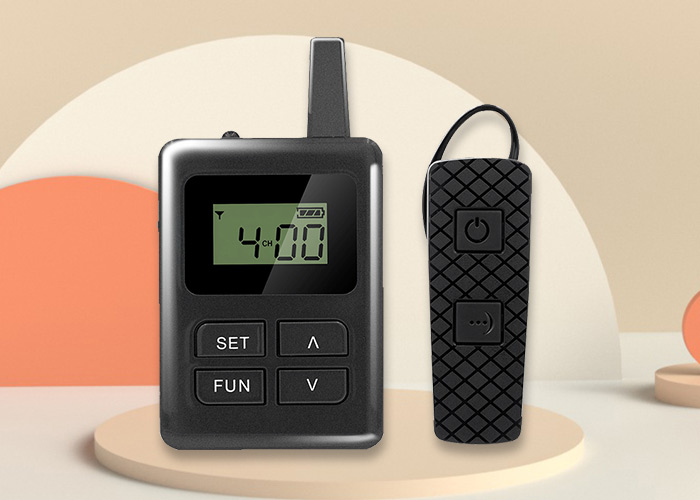The audio tour guide equipment on the market has different appearances, but generally speaking, there are two main types, one is the neck-mounted type, which is usually equipped with a lanyard, which is hung around the neck when in use, and then connected to the microphone or use with headphones. There is also an ear-hook type, that is, a bluetooth audio tour guide. The appearance of the receiver of this interpreter is only the size of a Bluetooth headset, and the appearance is similar to a bluetooth headset. It is more convenien, and the volume is light, so it is more popular with customers. Because the use of bluetooth audio tour guide not only improves the grade, but also has a stylish and technological appearance, which can also have a good impression on users. The bluetooth audio tour guide is generally used in government and enterprise receptions, large conferences, or when the exhibition hall receives important leaders for visits and inspections. It can play a one-to-many voice explanation mode. Speech at a normal volume can be clearly conveyed to the listener.
The bluetooth explainer speaks through the transmitter, and the receiver listens, so that all visitors in the team can hear the speaker's speech. When receiving visits, not only can the visitors have a certain free space to walk around and visit, but also do not delay listening keynote speaker's speech. This is because the bluetooth audio tour guide has a special signal range, so as long as you walk around and visit within the signal receiving range, it will not affect the reception of the speaker's explanation. The bluetooth explainer has a dedicated audio transmission channel, so that it does not need to have loud noise like a loudspeaker when speaking, and the sound quality will be relatively clear and clear, and it can also effectively shield the surrounding noise when explaining. Noise, to achieve the effect of anti-interference. The bluetooth audio tour guide is one of the common methods for team reception and explanation. It has one-to-many and many-to-many explanation modes, so you don't have to worry about the explanation problems of multiple teams visiting the reception at the same time or a large number of visitors in the group.

